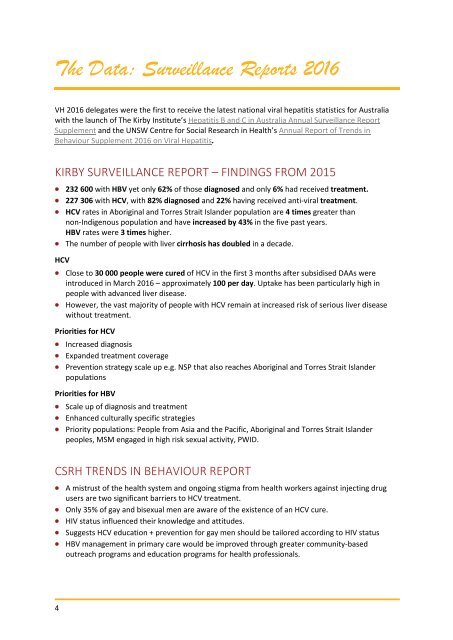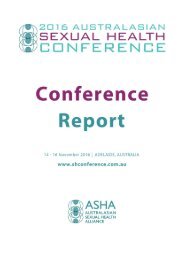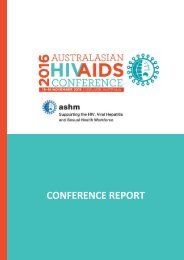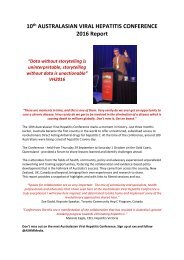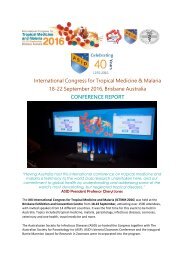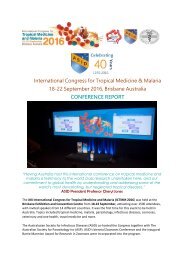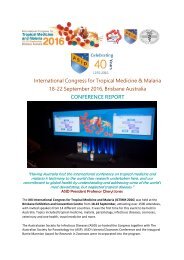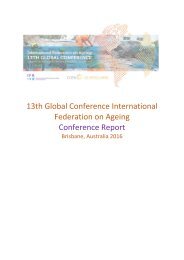ASHM_VH2016_Report_FINAL
Create successful ePaper yourself
Turn your PDF publications into a flip-book with our unique Google optimized e-Paper software.
The Data: Surveillance <strong>Report</strong>s 2016<br />
VH 2016 delegates were the first to receive the latest national viral hepatitis statistics for Australia<br />
with the launch of The Kirby Institute’s Hepatitis B and C in Australia Annual Surveillance <strong>Report</strong><br />
Supplement and the UNSW Centre for Social Research in Health’s Annual <strong>Report</strong> of Trends in<br />
Behaviour Supplement 2016 on Viral Hepatitis.<br />
KIRBY SURVEILLANCE REPORT – FINDINGS FROM 2015<br />
• 232 600 with HBV yet only 62% of those diagnosed and only 6% had received treatment.<br />
• 227 306 with HCV, with 82% diagnosed and 22% having received anti-viral treatment.<br />
• HCV rates in Aboriginal and Torres Strait Islander population are 4 times greater than<br />
non-Indigenous population and have increased by 43% in the five past years.<br />
HBV rates were 3 times higher.<br />
• The number of people with liver cirrhosis has doubled in a decade.<br />
HCV<br />
• Close to 30 000 people were cured of HCV in the first 3 months after subsidised DAAs were<br />
introduced in March 2016 – approximately 100 per day. Uptake has been particularly high in<br />
people with advanced liver disease.<br />
• However, the vast majority of people with HCV remain at increased risk of serious liver disease<br />
without treatment.<br />
Priorities for HCV<br />
• Increased diagnosis<br />
• Expanded treatment coverage<br />
• Prevention strategy scale up e.g. NSP that also reaches Aboriginal and Torres Strait Islander<br />
populations<br />
Priorities for HBV<br />
• Scale up of diagnosis and treatment<br />
• Enhanced culturally specific strategies<br />
• Priority populations: People from Asia and the Pacific, Aboriginal and Torres Strait Islander<br />
peoples, MSM engaged in high risk sexual activity, PWID.<br />
CSRH TRENDS IN BEHAVIOUR REPORT<br />
• A mistrust of the health system and ongoing stigma from health workers against injecting drug<br />
users are two significant barriers to HCV treatment.<br />
• Only 35% of gay and bisexual men are aware of the existence of an HCV cure.<br />
• HIV status influenced their knowledge and attitudes.<br />
• Suggests HCV education + prevention for gay men should be tailored according to HIV status<br />
• HBV management in primary care would be improved through greater community-based<br />
outreach programs and education programs for health professionals.<br />
4


